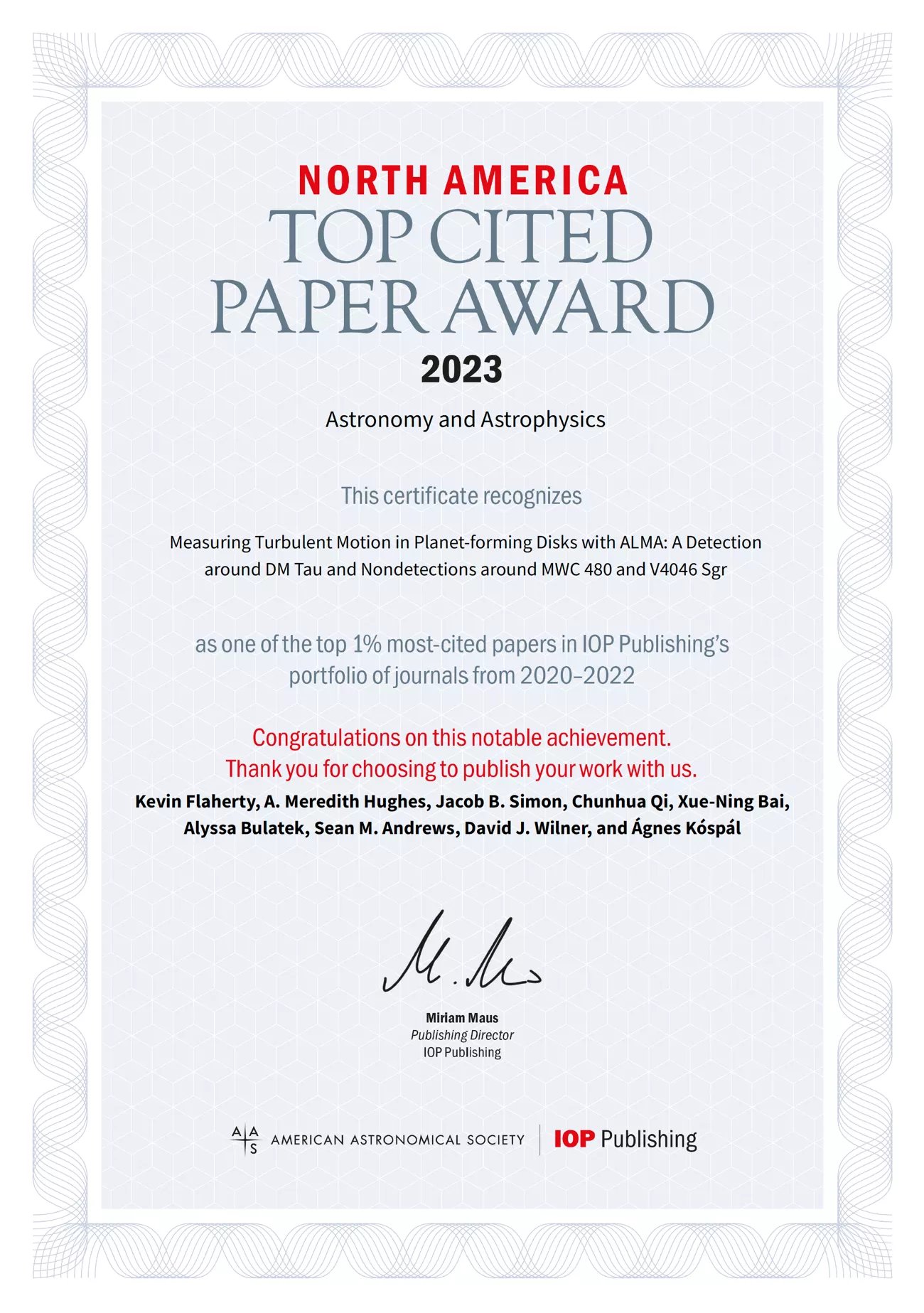Ágnes Kóspál, a researcher from the Konkoly Observatory at the HUN-REN Research Centre for Astronomy and Earth Sciences (HUN-REN CSFK) is one of the co-authors of a publication that received the Top Cited Paper Award 2023 from the Institute of Physics (IOP) Publishing.
This award is given to publications in the top 1% of the most cited articles published recently in IOP Publishing journals. For the first time, this year’s award recognised studies led by North American authors. One of the winners is a paper by Kevin Flaherty (Williams College, USA), who, in collaboration with other researchers from the US, China, and Hungary, investigated one of the most important but elusive properties of protoplanetary disks: turbulence.
Circumstellar disks of gas and dust around young stars are the birthplaces of exoplanetary systems. The turbulence of the disk's material determines how dust grains can stick together to form larger and larger bodies, planetesimals and eventually planets, and influences the orbits of the resulting planets as well. Turbulence is therefore a key factor in many models of planet formation, but has only been directly determined for a few planet-forming disks.
The researchers used the ALMA radio antenna array to take measurements of the gas material around three young stars, DM Tau, MWC 480 and V4046 Sgr. They examined the broadening of spectral lines from carbon monoxide molecules in the observations, looking for signs of turbulence. Their results show that turbulence in the DM Tau disk is of measurable strength: the turbulent velocity of the gas particles is typically a quarter to a third of the speed of sound in the gas. However, the turbulence in the disks of the other two stars is so weak that it remained undetectable by the present measurements.
The study of circumstellar disks with ALMA is one of the main research topics of the team led by Ágnes Kóspál at Konkoly Observatory. “ALMA's exceptional sensitivity and fine frequency resolution allowed us to detect the barely noticeable effect of turbulence in one of the disks,” explains Ágnes Kóspál. “This makes DM Tau one of the few disks where we have been able to determine the strength of turbulence.”
Most studies in the literature can only give upper limits on the velocity of turbulent motions, suggesting that turbulence is weak in most disks. The strong turbulence found for DM Tau may be related to stronger ionising radiation hitting the disk, a stronger magnetic field, or the younger age of the star compared to other systems studied.

Results of numerical simulations of the turbulent motions in a protoplanetary disk
(source: Barraza-Alfaro et al. 2021).

Top Cited Paper Award 2023 for the publication of Flaherty et al. 2020 (source: IOP Publishing).